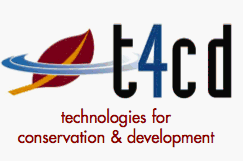Sunday, January 15, 2006
Introduction to Mobile Communications
The spread of global telecommunications networks, both land-based GSM and satellite, present new and unique opportunities for voice and data communications to the conservation and development communities. Not only is it becoming steadily easier and cheaper for fieldworkers in remote locations to contact each other, but high-speed information and data flow in and out of the field (to a national or international headquarters or between organisations and stakeholders, for example), is now a reality.
While satellite communication devices are generally out of reach for many due to cost - although they continue to come down in price - mobile phone uptake has been phenomenal; not least in developing countries where it is seen as a 'leapfrogging' technology and one which is helping close the digital divide. Mobile phones and satellite communication devices have huge potential to enhance conservation & development work, particularly given the numerous tools that can be integrated into such devices - many are enabled with mobile internet, text messaging, picture messaging, cameras and a variety of operating systems and software - but how best do we make use of this potential?
GSM's ability to cross over into conservation disciplines, such as wildlife tracking, is just one example of how adaptable and flexible the technology can be, and as more and more devices converge - as we have seen with the development of camera phones and GSM-enabled PDA's - the greater the opportunities become.
What do you think? Please use the comments feature to let us know and help to shape our discussion.
While satellite communication devices are generally out of reach for many due to cost - although they continue to come down in price - mobile phone uptake has been phenomenal; not least in developing countries where it is seen as a 'leapfrogging' technology and one which is helping close the digital divide. Mobile phones and satellite communication devices have huge potential to enhance conservation & development work, particularly given the numerous tools that can be integrated into such devices - many are enabled with mobile internet, text messaging, picture messaging, cameras and a variety of operating systems and software - but how best do we make use of this potential?
GSM's ability to cross over into conservation disciplines, such as wildlife tracking, is just one example of how adaptable and flexible the technology can be, and as more and more devices converge - as we have seen with the development of camera phones and GSM-enabled PDA's - the greater the opportunities become.
What do you think? Please use the comments feature to let us know and help to shape our discussion.
Comments:
<< Home
When chatting to many conservationists, one of the biggest obstacles in the field (other than politics!) is communication. Getting a simple message that a meeting is cancelled, for example, can mean a day driving around informing attendees of the change.
But are all communication needs as straight cut as this? If we're just talking about the odd phone call or SMS, then maybe we need to be playing to the mobile phone company's CSR (Corporate Social Responsibility) agenda to get them to extend their network coverage. But is this realistic? Issues of masts springing up left, right and centre are not just concerns that we have - they are also sensitive issues in developing countries, particularly within national parks. As you will already be aware, though, politics is not on the Agenda of this Conference.
In contrast, maybe satellite communications are the way forward, but how many rural people in Africa, say, can get hold of let alone afford a satellite phone? And does it matter, as long as Project Managers and Government officials can get hold of one another? If you work in conservation or development, what do high rates of mobile phone ownership among stakeholder communities mean to you? Do you find yourself frustrated by lack of communication tools? Or doesn't it matter? I'd be very interested in hearing your stories and thoughts. This could be your chance to not only be heard but to also be part of the solution...
Post a Comment
But are all communication needs as straight cut as this? If we're just talking about the odd phone call or SMS, then maybe we need to be playing to the mobile phone company's CSR (Corporate Social Responsibility) agenda to get them to extend their network coverage. But is this realistic? Issues of masts springing up left, right and centre are not just concerns that we have - they are also sensitive issues in developing countries, particularly within national parks. As you will already be aware, though, politics is not on the Agenda of this Conference.
In contrast, maybe satellite communications are the way forward, but how many rural people in Africa, say, can get hold of let alone afford a satellite phone? And does it matter, as long as Project Managers and Government officials can get hold of one another? If you work in conservation or development, what do high rates of mobile phone ownership among stakeholder communities mean to you? Do you find yourself frustrated by lack of communication tools? Or doesn't it matter? I'd be very interested in hearing your stories and thoughts. This could be your chance to not only be heard but to also be part of the solution...
<< Home

